Emily Allen leads retail market insights for Google U.K. Here she highlights eight insights retailers should know about, and shares tips on what they can do to be there for their customers.
Travel restrictions, store closures, home schooling, and more; COVID-19 turned most people’s lives upside down overnight — and one area that was immediately impacted was retail. From a shopper’s initial research up until the moment of purchase, suddenly many customer journeys were predominantly taking place online.
But what can retailers do to overcome the challenges brought by this major shift? Smart Shopper, a study commissioned by Google and conducted by KANTAR in May 2020,1 shines a light on shopping behaviours during the pandemic to help inform brand, marketing, and consumer strategies — now and in the future.
1. Some retail categories show higher shifts to online shopping than others
With a large number of stores forced to temporarily close their physical outlets or operate with significant restrictions in the U.K., there has been a strong shift towards online purchases in 2020. The biggest increase was seen across fashion, home, and consumer electronics as shoppers in the U.K. were encouraged to restrict their movements to essential journeys only. Beauty products, however, were still bought mainly offline — likely because these are available in grocery and drug stores, which remained open.
Action: Be clear. As your physical stores reopen, using ad extensions will allow shoppers to easily see any changes to your operating hours or conditions of opening.
Online vs offline purchases year-on-year
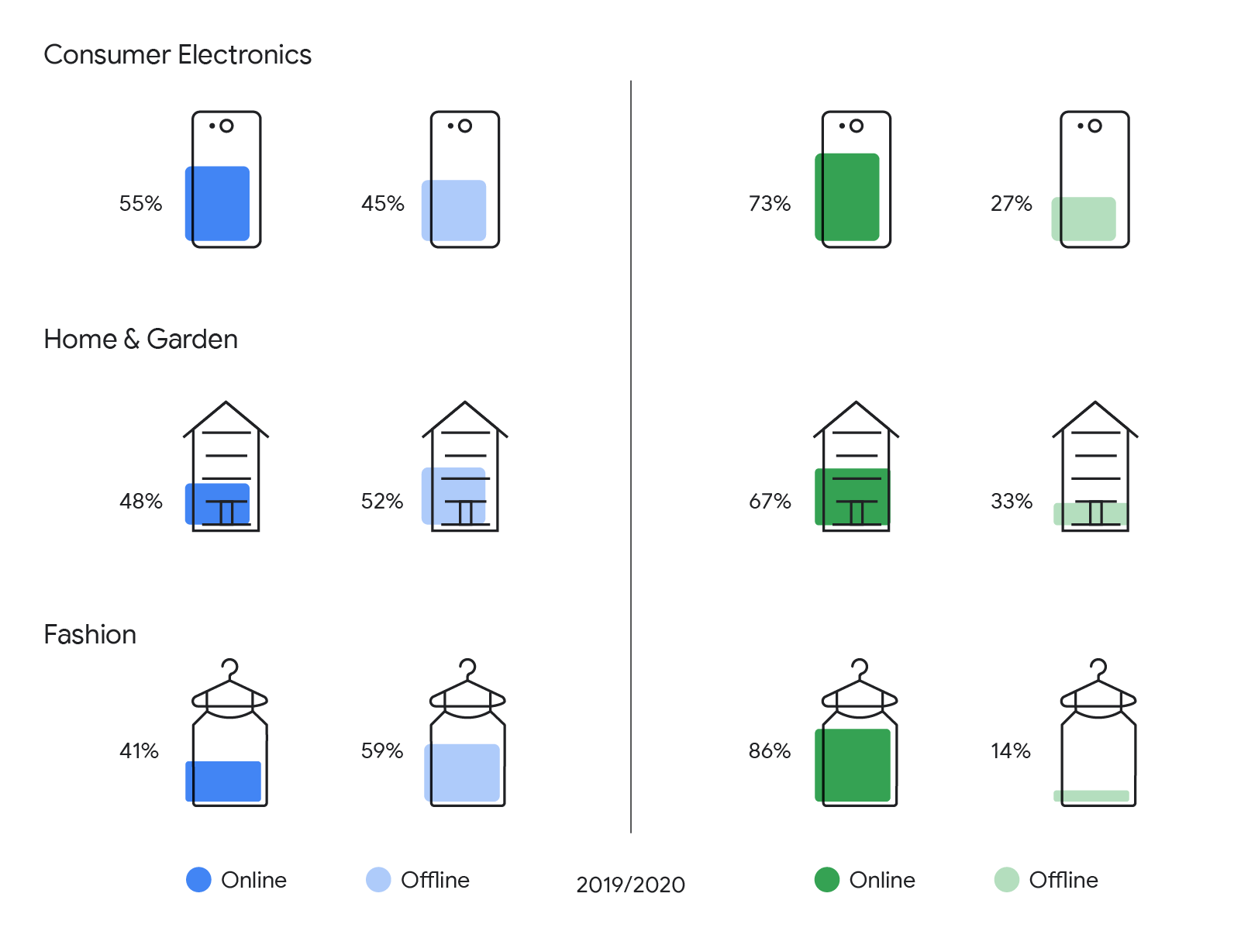
2. Shoppers increasingly prefer channel-agnostic purchases
Even in this dynamic environment, physical stores remain a crucial part of the user journey. But as routines and schedules change for retailers, so do the shopping behaviours of their consumers, with shoppers demonstrating an increase in channel-agnostic purchase preferences. This shift makes omnichannel strategies, and being present at all touchpoints of a consumer journey, even more relevant.
Action: Be integrated. Ensure your online and offline teams work as one unit by giving them shared KPIs.
Preference of purchase channels across verticals with shops closed
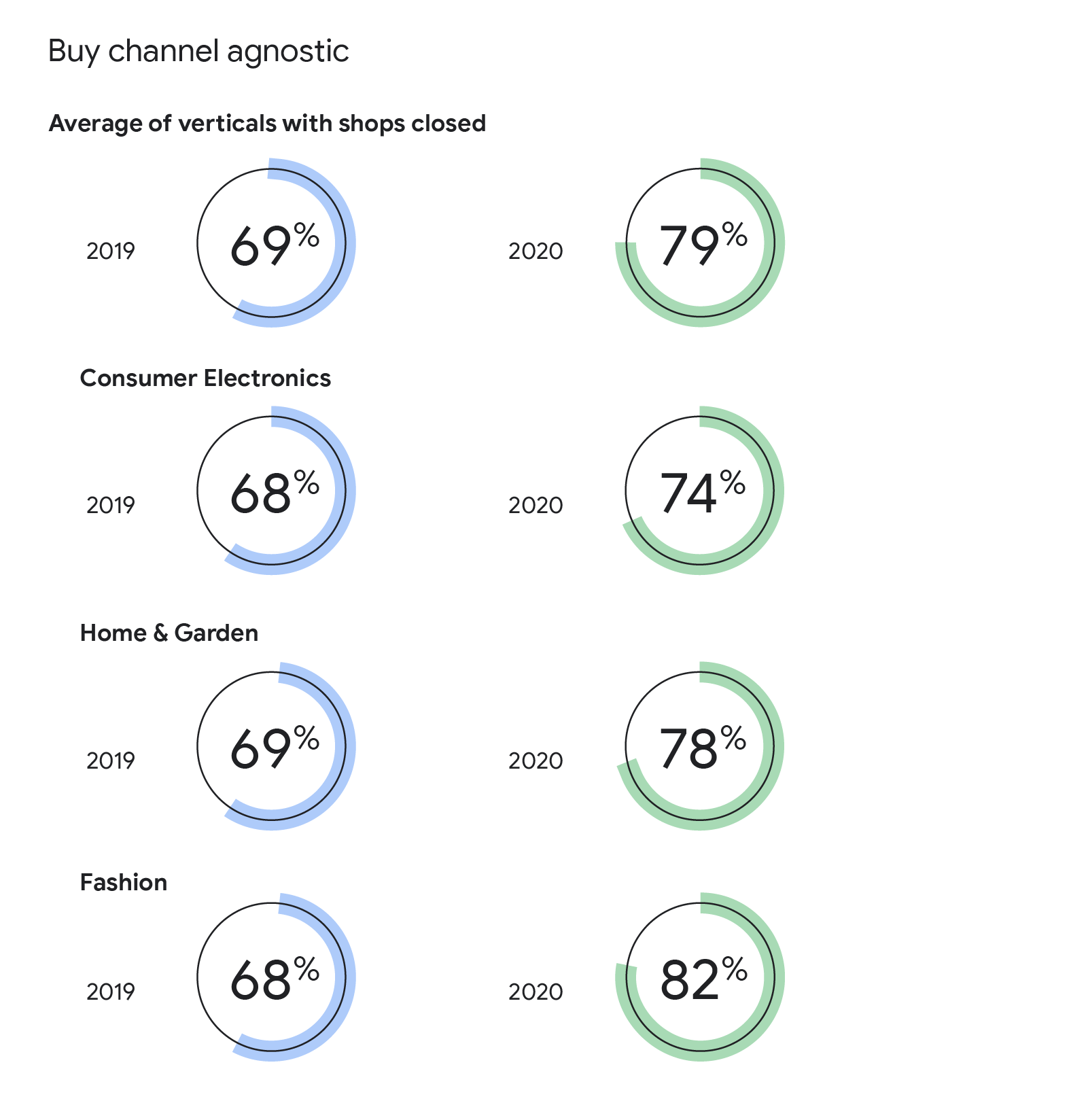
3. Convenience is valued above all else
Despite significant changes in consumer behaviour — from spending more time at home to picking up new hobbies — the motivations behind purchase channel selection remained broadly the same during the first half of 2020. Convenience was still the number one factor across most retail categories. And unsurprisingly, home delivery and availability were also key.
Action: Be available. Display shipping options and availability in marketing messages, and provide an online chat option to address any customer queries.
Drivers of online vs offline purchases
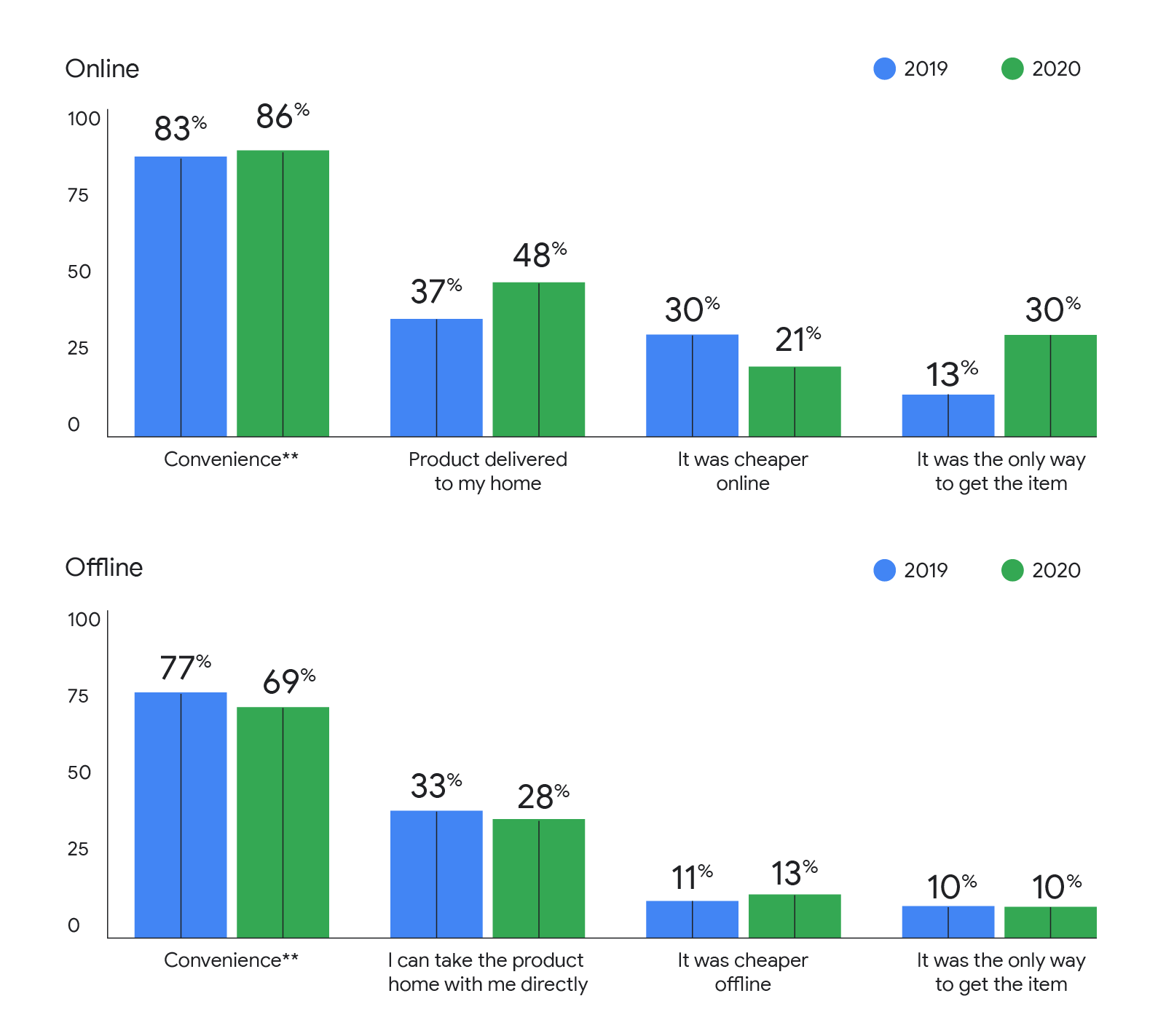
4. In store pain points increased, but shoppers had a better experience shopping online
Pain points faced by buyers shopping in store increased in 2020, with nearly half (48%) of U.K. consumers facing an issue, compared to 42% in 2019. In contrast, 33% of shoppers faced an issue shopping online, compared to 41% in 2019. The majority of in-store pain points were largely related to issues surrounding COVID-19 (long queues in front of the store due to access restrictions, longer delivery periods, etc.) Online, pain points were around the need to register or login to a site before purchasing, hard to find product reviews, and slow customer service response times.
Action: Be seamless. Allow buyers to access products and services quickly and easily, without a required login, and communicate customer service wait-times so that buyers can appropriately set expectations.
5. Online product research increased, driven mainly by shoppers aged 45+
Online research increased in 2020, with 84% of shoppers using online sources to support their purchases, vs. 76% in 2019. This shift was largely driven by shoppers over 45 years old, with 80% of those aged 45-54 doing online research, vs. 68% in 2019. A similar trend was seen amongst those that are 55+, with 81% doing online research in 2020, vs. 62% in 2019.
Action: Be inclusive. Invest in UX and design, so non-digital native shoppers can easily navigate through your site.
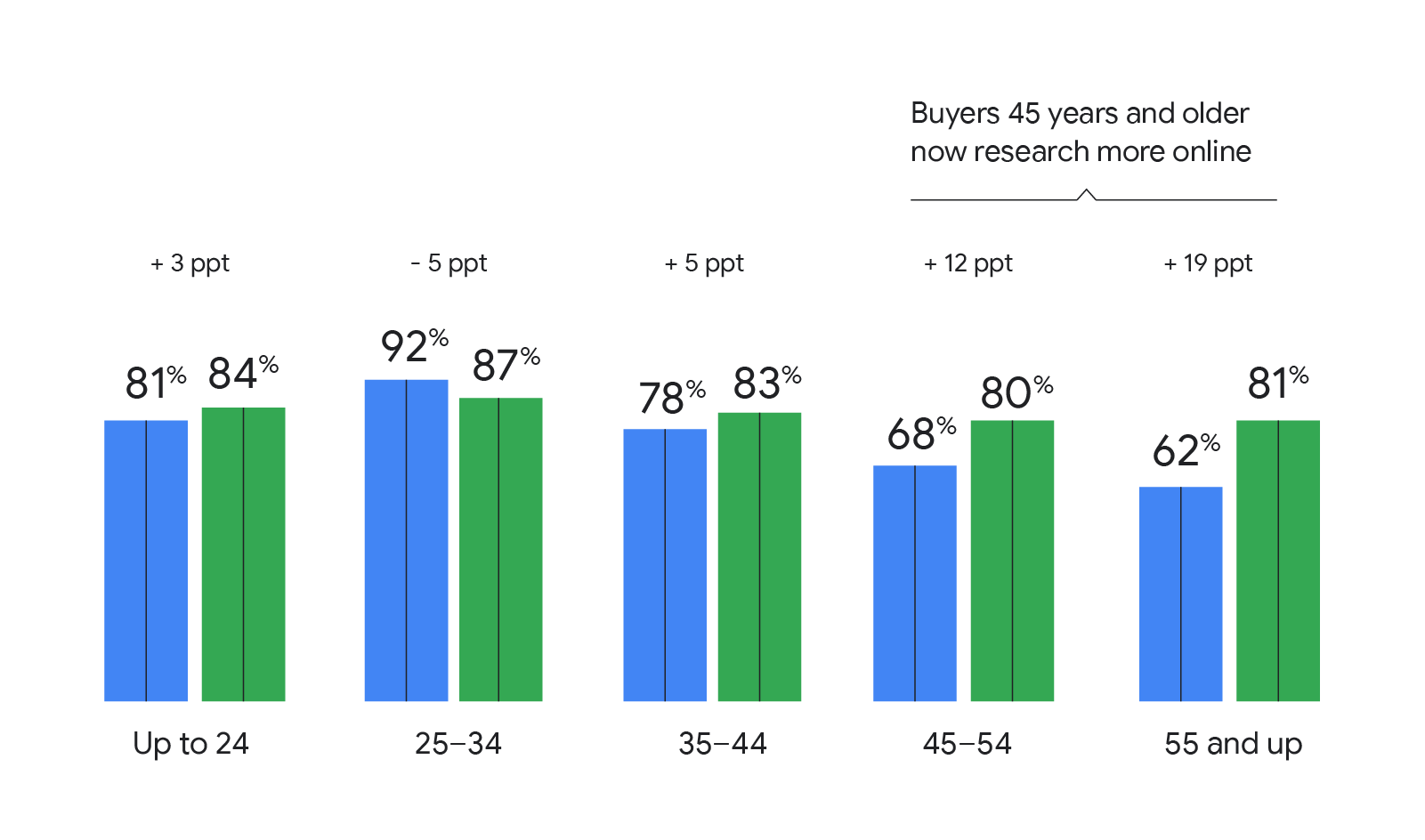
6. Availability, price, and convenience are reasons to switch retailers
Consumers who bought new brands, or tried new retailers in 2020, were not overly concerned about quality or recommendations from other shoppers. Instead, for shoppers in the U.K., price (43%), convenience (36%), and speed (33%) were at the forefront of purchase decisions, with availability (44%) being the most important factor of all.
Action: Be communicative. For out of stock products, offer to let consumers join a waitlist to see when the product will once again be available.
7. Brands are expected to care about sustainability and social issues
A brand’s stance on sustainability or social issues is important to shoppers, with 62% saying that they cared about at least one sustainability aspect when purchasing online in 2020. From fair working conditions and diversity and inclusion to environmentally friendly production and avoiding harmful ingredients — the sustainability factors that impact a shoppers purchase decision were wide-ranging.
Action: Be transparent. If your products are sustainable let shoppers know both in your display ads and across your website and app.
62% of consumers care about at least one of the below aspects
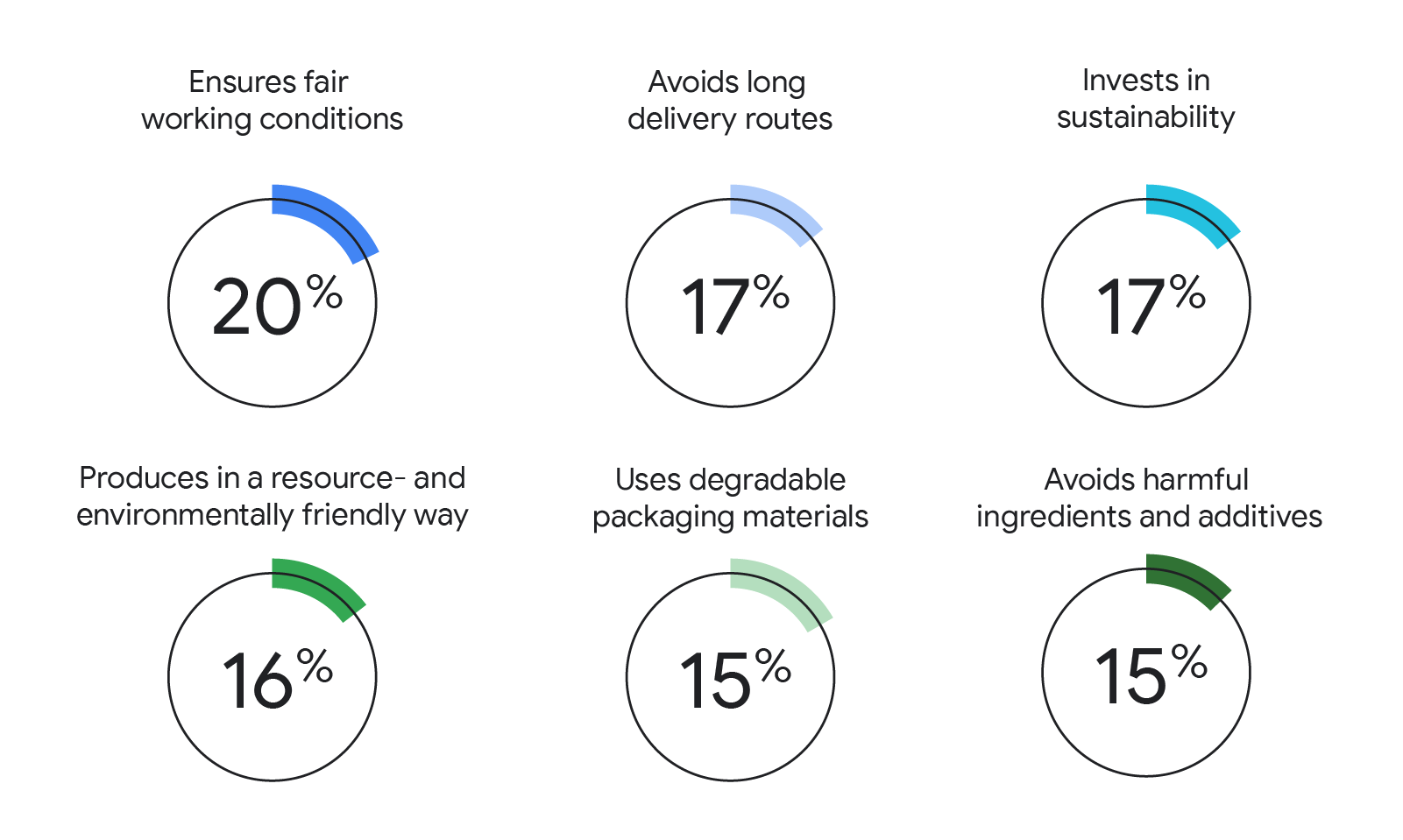
8. Shopping apps are on the rise
Over a third (37%) of consumers now have performed a mobile purchase via an app, compared to 24% in 2019. These apps are a mix of retailer and individual brand apps, with the former being used more frequently in 2020. Shoppers are most likely to have apps from consumer electronics (71%), home & garden (63%), and fashion (55%) installed on their phones.
Action: Be always on. Native apps can not only provide a faster, more reliable experience for shoppers but, with their phone always by their side, an app can also increase the conversion window.
Taking action
As the uncertainty and inconvenience caused by COVID-19 continues to have an impact on consumer behaviour, now is the time for retailers to be clear, available, and seamless. Listen to your customers’ needs, learn from their behaviour, and adapt your operations accordingly.








